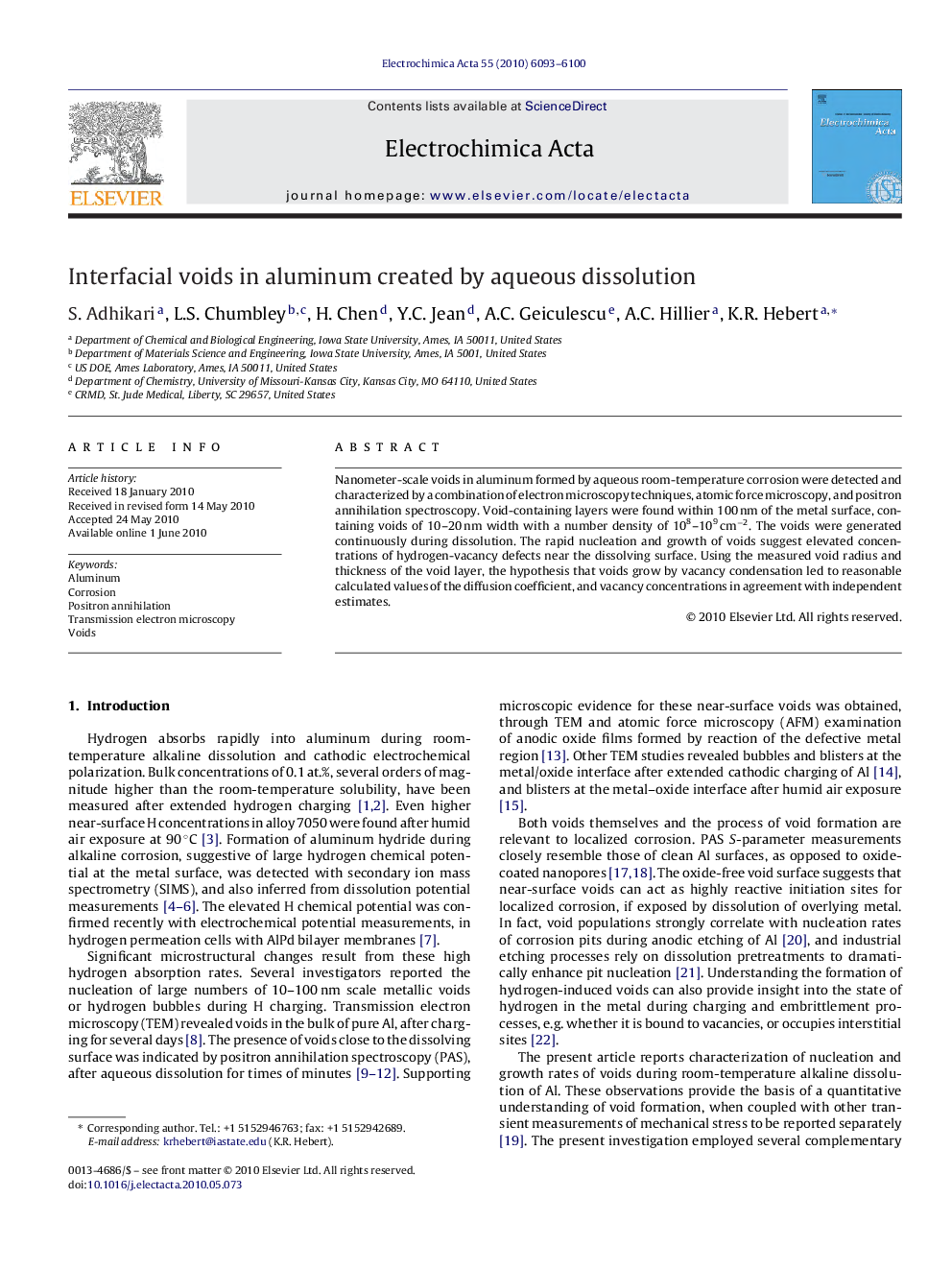| Article ID | Journal | Published Year | Pages | File Type |
|---|---|---|---|---|
| 191172 | Electrochimica Acta | 2010 | 8 Pages |
Nanometer-scale voids in aluminum formed by aqueous room-temperature corrosion were detected and characterized by a combination of electron microscopy techniques, atomic force microscopy, and positron annihilation spectroscopy. Void-containing layers were found within 100 nm of the metal surface, containing voids of 10–20 nm width with a number density of 108–109 cm−2108–109 cm−2. The voids were generated continuously during dissolution. The rapid nucleation and growth of voids suggest elevated concentrations of hydrogen-vacancy defects near the dissolving surface. Using the measured void radius and thickness of the void layer, the hypothesis that voids grow by vacancy condensation led to reasonable calculated values of the diffusion coefficient, and vacancy concentrations in agreement with independent estimates.
